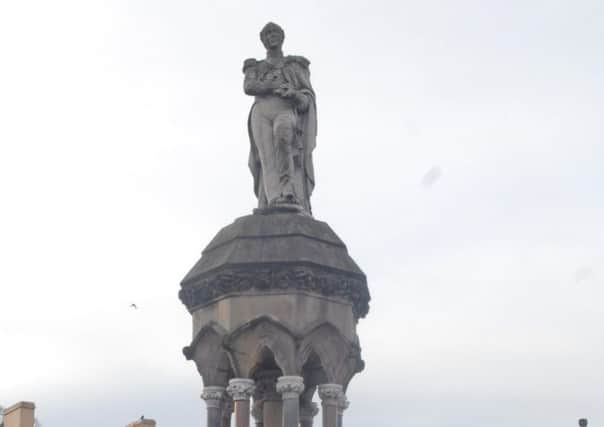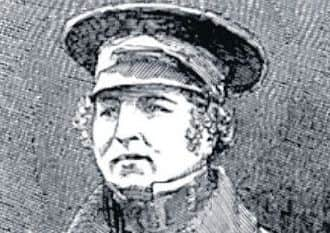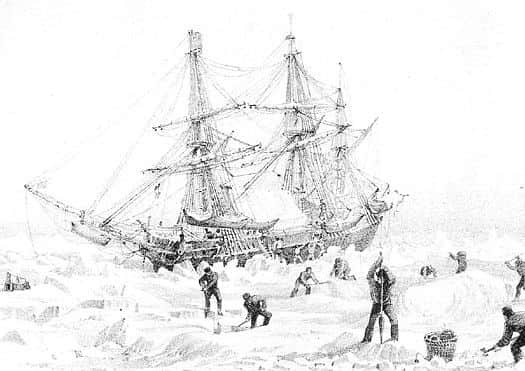Ulsterman Francis Crozier's doomed ship found in Arctic


The ship located was HMS Terror, one of two led by Co Down man Francis Crozier on a doomed expedition to navigate and chart the Northwest Passage, an unforgiving stretch of sea.
Two ships, the HMS Terror and HMS Erebus, set off on the expedition in May 1845 but neither would return.
Advertisement
Hide AdAdvertisement
Hide AdInstead, the 129 men on board both ships were to meet a grisly end when they became trapped in ice in perhaps the worst tragedy of all the polar expeditions.


For 170 years, the location of the two vessels has been a mystery, with numerous failed attempts to locate the lost ships in the years following their disappearance.
The Arctic Research Foundation said in Canada that the HMS Terror has now been located, following on from the 2014 discovery of the HMS Erebus.
Adrian Schimnowski, the expedition leader of the research ship that located the HMS Terror, said it was ”a perfect time capsule”.
Advertisement
Hide AdAdvertisement
Hide AdThe Terror was discovered in 26 yards of water in a small indentation on the coast of King William Island known as Terror Bay, west of the community of Gjoa Haven.


Canadian Rear-Admiral John Newton said the two Franklin ships were found about 31 miles apart from each other.
In overall command of the ill-fated polar expedition was Sir John Franklin, a distinguished Royal Navy captain.
However, Franklin’s age – he was approaching his 60th birthday – was to mean much of the voyage’s actual leadership was to come from Francis Crozier, who had himself been considered for overall command but had stood aside in deference to the more distinguished and experienced Franklin.
Advertisement
Hide AdAdvertisement
Hide AdThe expedition sought to chart a path through the fabled Northwest Passage, a sea route connecting the Atlantic and Pacific Oceans through the icy waters in the Canadian Arctic.


For centuries, explorers had sought a navigable passage through the waters to open up trade routes.
After they became trapped in ice, the survivors apparently abandoned the two ships in April 1848 in a hopeless bid to reach safety overland.
Despite the tragic end to the expedition Franklin, Crozier and their men helped open up parts of the Arctic and ultimately found a Northwest Passage that may finally find use thanks to the earth’s changing climate.
Advertisement
Hide AdAdvertisement
Hide AdCrozier is well known in his home town of Banbridge which is now benefiting from a surge of interest thanks to the 2014 discovery of the Erebus, Jason Diamond of the FE McWilliams centre has said.


Mr Diamond said: “Crozier’s story is well known to people in and around Banbridge – he is probably Banbridge’s most famous son – but he has never had the recognition of some of the other Irish explorers, like Shackleton or McClintock.
“A lot of that possibly comes down to the fact that he was at the very beginning of the heroic age of polar exploration.
“The voyage was ultimately unsuccessful but he was a pioneer. We still claim him as the man who discovered the Northwest Passage even if it ended in tragedy.
Advertisement
Hide AdAdvertisement
Hide Ad“We have seen a real increase in interest, particularly since the discovery of the Erebus, so hopefully that continues with the great news that the Terror has been found.”
Mr Schimnowski, the leader of the expedition to find the Terror, said the mystery might have remained if not for a late-night conversation on the Martin Bergmann, a research vessel, between himself and Sammy Kogvik, an Inuk and Canadian Ranger from Gjoa Haven.
Mr Kogvik started talking about something he had seen seven years ago while snowmobiling across the sea ice off Terror Bay. He recalled how he had looked behind him to check on his hunting partner when he spotted a large pole sticking up out of the ice. The two Inuit stopped and took pictures of what looked like a ship’s mast.
But when he got home to Gjoa Haven, he found he had dropped his camera and lost the shots.
“We listened to Sammy’s story on the bridge of the Bergmann and changed course to take a look,” he said.
There are no plans to raise either ship.